Incubators, accelerators, innovation centers, launch pads. Everyone defines the idea a bit differently, but, generally, these infrastructures refer to a subsidized space where fledgling companies get support—a combination of mentorship, funding, low rent, networking opportunities, and other training—with the goal of propelling early businesses to success.
As the name implies, the business incubator is meant to protect and nurture seedlings of new ventures. Start-ups must go through an application process (usually competitive) and, if selected, enjoy the perks of the incubator for a set period of time, typically a few months to a few years. In exchange, traditional incubators get some stake in the company, for example, an equity investment or technology licensing rights, though more incubators are moving away from this model and counting on relationship building to lead to organic partnerships (see “Fast-Tracking Incubation”).
[accordion title=”Fast-Tracking Incubation”]
A spin-off of the incubator model, called the accelerator, has recently—and rapidly—been growing in popularity in the United States and overseas. Like incubators, accelerators often involve a highly competitive application process. Start-ups that are accepted are given supportive infrastructure like mentorship, workspace, practical business training, and, usually, some amount of funding in exchange for equity in the company.
But unlike incubators, accelerators have a much more aggressive time line. A company may stay for several years in an incubator, but companies in accelerators are often moved through the program in three months or so (usually no more than six). The restricted time line also often culminates in a pitch day or “demo day,” where companies pitch their products or services to sometimes hundreds of investors.
Accelerators have mainly focused on technology and other industries but, in 2014, several accelerator programs began to focus on bioscience. The Silicon Valley-based Y Combinator, one of the oldest and top-rated incubator/accelerator programs in the country (nurturing such heavy-hitting companies as Dropbox, Airbnb, and Reddit), opened its program to biotech companies in the summer of 2014 to see if start-ups in the life sciences or biotech could benefit from acceleration programs as well as web companies have. In particular, Y Combinator issued a call for companies that focus on biotechnology (ways to defend against biowarfare, for example); preventative health care; medical devices; and pharmaceuticals, especially nonprescription drugs like cognitive enhancers.
Another biotech-focused accelerator recently emerged out of the genome-sequencing powerhouse, San Diego-based Illumina. The Illumina accelerator accepted its first class in fall 2014 in San Francisco with the goal of furthering the company’s mission of advancing the science of genetics to improve medicine and health. Like Y Combinator, Illumina takes in a handful of selected management teams with promising ideas and provides a fastpaced program of mentorship, funds, and access to state-of-theart equipment in exchange for an equity stake. It offers a longer— though still aggressive—accelerator program than the norm, with its first class staying for six months (with partner presentations and demonstrations beginning in the fourth month).
Another recently established accelerator, called IndieBio (short for “independent biology”), offers a 100-day biotech accelerator that provides US$50,000 funding, lab space, and mentorship. The program, which is based in San Francisco, accepted its first class in March 2015 and is interested exclusively in companies in the realm of biotech and synthetic biology.
“We are focused on funding and accelerating early stage global biotech companies,” says Ryan Bethencourt, program director and a venture partner at IndieBio. “Our target is to fund a total of 30 biotech companies per year, making us the most active early stage biotech accelerator and seed fund we’re aware of.”
While the new accelerator program is ambitious, Bethencourt admits that speeding up the development of business ideas and products in biotech has a unique set of challenges. “Some of the biggest challenges we’ve faced have been supporting biotechs who are building products and services in a range of different industries and also finding sufficient lab space in downtown San Francisco, which will continue to be a challenge as the companies we fund continue to grow,” says Bethencourt. He adds that the accelerator’s location in San Francisco has given it access to world-class talent and global and local Silicon Valley capital.
Accelerators for biotechnologies and the life sciences have prompted some skepticism since their rise in popularity, with critics arguing that the accelerator time line is too short to benefit bioscience companies because these start-ups often need a longer time to market than other industries. This lag is due in part to more extensive—and expensive—regulatory tests and hurdles to ensure the safety and viability of products and services designed for human health care.
“We are seeing some accelerators attempting to get into the biology space to speed up the commercialization process,” says Alejandro Amezcua, an assistant professor of entrepreneurship at Syracuse University who studies incubators and accelerators. “Accelerators have typically worked with technology and other industries easier to commercialize, so it will be interesting to see if they can adapt their coaching and other techniques to bring success to a more high-risk industry like biotechnology.”
[/accordion]
In recent years, the number of incubators— funded privately or publicly through universities and local governments—has dramatically increased, in part driven by stories of web companies, like Facebook, rising to grandeur seemingly overnight. According to the National Business Incubation Association (NBIA), there are just over 1,000 business incubators in the United States, with a third dedicated to technology.
But biomedical and bioengineering start-ups (and the incubators that seek to support them) face unique challenges, making them a more costly type of business to run: they need labs and expensive equipment, and their products must adhere to stringent regulations and often undergo human trials. Coupled with drastically reduced federal funding in the sciences, biomedical-related innovations inside and out of research institutes can have a hard time getting started.
The solution for biomedical engineers and scientists has come in the form of dozens of biotech incubators that have sprung up around the United States, notably in established biotech centers with a large concentration of research universities and pharmaceutical companies, in particular, Massachusetts and California. Most venture capital funding in the biotech sphere, according to PricewaterhouseCoopers’ (PWC’s) MoneyTree Report (based on data from Thomson Reuters), goes to New England, Silicon Valley, San Diego, Texas, the Midwest, the Southeast, Colorado, Philadelphia, New York, and Washington, D.C.
“San Diego is an emerging hotspot, while Boston and San Francisco have been hotbeds for years,” says Lawrence Molnar, director of the Center for Business Acceleration and Incubation Studies at the University of Michigan. “But there’s also an emerging market in Indiana and Maryland. The medical device industry is also growing in Michigan, spurring on medical start-ups.”
Some of these incubators are stand-alone enterprises embracing a do-it-yourself, hacker-like leanness, while others are lush outfits working under the umbrella of a university or premiere private space. Whatever their form, they are credited with having nurtured into being a number of companies ranging from those devoted to medical technologies (like catheters and tests), health information technology (like apps and medical records), and pharmaceuticals.
Under the University Umbrella
Last year, AxoGen, a publicly traded company, reported US$17 million in sales for its peripheral nerve products. The company is a biotech incubator success. In 2007, AxoGen joined University of Florida’s Sid Martin Biotechnology Incubator (located near Gainesville) for access to lab space and grew from there.
“We have said very often that the incubator actually accelerated our ability to get to market by making resources available to us at a critical time in our development,” says Jill Schiaparelli, AxoGen’s chief marketing officer. “First, the lab equipment we needed would have been prohibitive to purchase on our own at that time, and, second, we gained access to a great network within the incubator community that helped connect us with contacts who could help with technical and other advice.”
In its 20th year, Sid Martin is one of the oldest university biotech incubators in the country, with a number of success stories and several awards. Its companies have attracted over US$1.2 billion in funding, according to Patti Breedlove, director of the program. A dispute over intellectual property around the development of Gatorade more than four decades ago prompted the University of Florida to establish a robust technology transfer process. Over 40 companies have been incubated at Sid Martin since, typically staying for five to seven years.
“Biotech companies have long childhoods because they face a perfect storm of regulatory hurdles, a high cost of getting to market, and specialized facility and equipment needs,” says Breedlove. “But our support of them is rewarded by seeing products get to market that have a profound impact on people’s lives. AxoGen’s technology, for example, allows people to walk, smile, or play piano again.”
University-based incubators (which take applicants affiliated with the university) often get knocked for being too bureaucratic and slow to respond to the corporate marketplace. Nevertheless, a number of universities have generated successful incubators, such as the University of Buffalo Technology Incubator, the Austin Technology Incubator, and Enterprise Works Chicago, benefiting from resources to support expensive facilities and a self-renewing pipeline of talent and discoveries.
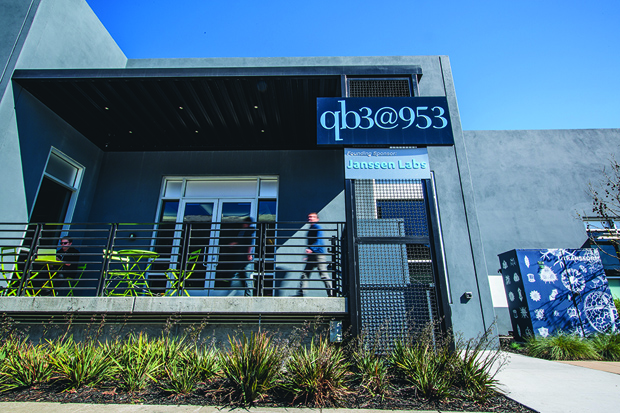
For example, the University of California’s QB3, an institute based in San Francisco, hosts programs for university-affiliated innovators throughout the bay area. QB3 also launches off-campus incubators open to the public, such as QB3@953, a 24,000-ft2 incubator that opened in 2013 (Figure 1). Entirely self-funded through rent and other services and located close to the University of California, San Francisco’s Mission Bay campus, QB3@953 houses about 50 companies. “To be successful, you have to remove artificial boundaries between private and public start-ups,” says Kaspar Mossman, director of communications and marketing for QB3.
And what about the perception that university incubators are often slow and bogged down with bureaucracy? “That’s often a problem for universities, but a critical piece of being good at this is running interference,” says Breedlove. “One of the skills we developed early at the incubator was creating a nimble interface between a large university and small companies with corporate environments that need us to be very responsive.”
West Coast Growth
Joseph Jackson, cofounder of Bio, Tech and Beyond, established two years ago just outside San Diego, is all about “democratizing and disrupting” bioengineering by giving start-ups with minimal funding access to resources. He and cofounder Kevin Lustig partnered with the city of Carlsbad to lease and convert a vacant building into an incubator space and outfit it with salvaged laboratory equipment (Figure 2).
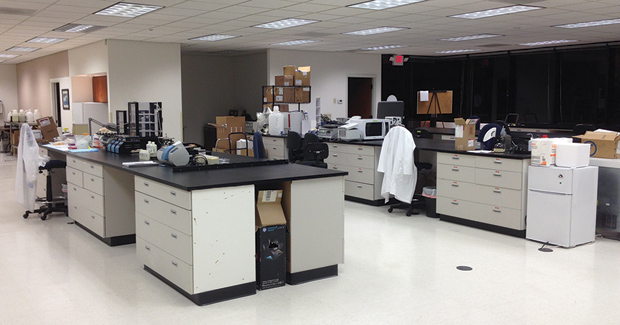
“Usually incubators sink in a ton of money up front and have to wait years to measure their success,” says Jackson, who has 15 companies incubating to date. “We inverted that model to be an infrastructure that is incredibly capital efficient.”
To do this, the incubator focuses on “do-it-yourself” resourcefulness and relies on members (some self-funded, others with early-stage grants or seed money) to volunteer for routine tasks to keep the place running. While many incubators require their applicants to have a certain amount of funding or specific credit history, Jackson doesn’t—rather, he is interested in start-ups with an innovative idea and that fit the ethos of the incubator.
“Bio, Tech and Beyond was a great fit for us as it already had some equipment, procedures, and training available that lowered our start-up cost and made it easy to get started and focus on the science,” says Ewa Lis, who pays US$1,000/month for a bench and office for the two-person Koliber Biosciences, a synthetic biology start-up with seed funding from the founders and a U.S. National Science Foundation grant to engineer microbes for developing high-value chemicals.
“The low rent and access to laboratory equipment allow us to spend more money on experiments and keep costs down,” adds Leticia Cano, founder of Biomarker Profiles, a company funded by the U.S. Department of Defense to develop a blood test for pain.
“Just like cities invested in libraries to create a literate population, we’d love to see these types of science facilities all over so you don’t have to be part of a postdoctoral program to gain access to equipment,” says Jackson. “We’re trying to lower costs and barriers so people are enabled to try out ideas.”
Another biotech incubator in the area has recently opened to encourage more local innovation, this one funded by the nonprofit SoCal Entrepreneurial Ecosystems Development (EED). The San Marcos-based Wireless Health Hub incubator launched in 2013 to foster medical and consumer health devices that push the boundaries beyond tracking simple health metrics.
“We are becoming an older, more active population, and, at the same time, the millennial generation is embracing the quantified- self movement. Those two things are crashing into each other, and you’re seeing really interesting things being developed for medical diagnostics,” says Charles Zahl, serial entrepreneur, director of SoCal EED, and founder of its new incubator.
As wireless health care devices, like heart-rate monitors and step trackers, become ubiquitous, Zahl is looking for companies that make these tools more useful. “We want to find that common language between personal monitoring and real medical monitoring, between the average layman and the doctor,” says Zahl.
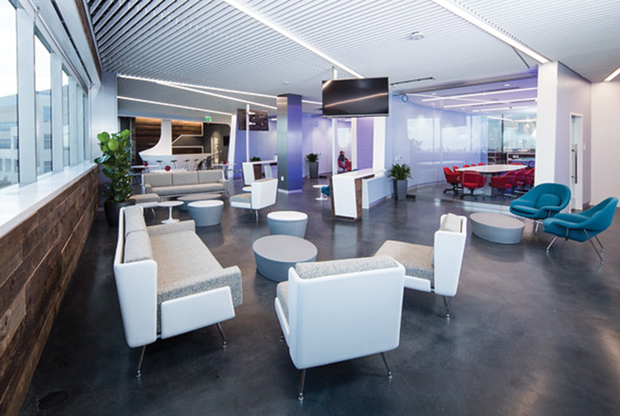
Also in the burgeoning biotech center of San Diego is JLABS (previously known as Janssen Labs), which started in 2012 as an incubator under the health care company Johnson & Johnson and has 42 incubating companies to date. JLABS (Figure 3), with centers also in San Francisco, Boston, and soon Houston, is one of the earliest incubators to boast an increasingly popular “no-strings” model, where accepted applicants don’t need to agree to share any equity in the long run. The companies simply pay rent if accepted, while a JLABS operations team handles day-to-day maintenance for the companies.
“Our rationale is that entrepreneurs don’t want to be owned. We give them the freedom to operate and potentially partner with us if they chose,” says Kara Bortone, head of company sourcing for JLABS. So far, it’s been a successful model, says Bortone. For instance, Wellspring Biosciences, which joined JLABS in the summer of 2012, ended up developing an arrangement between an affiliate and JLABS’ partner company, Janssen Biotech, to develop personalized cancer treatments.
East Coast Stars
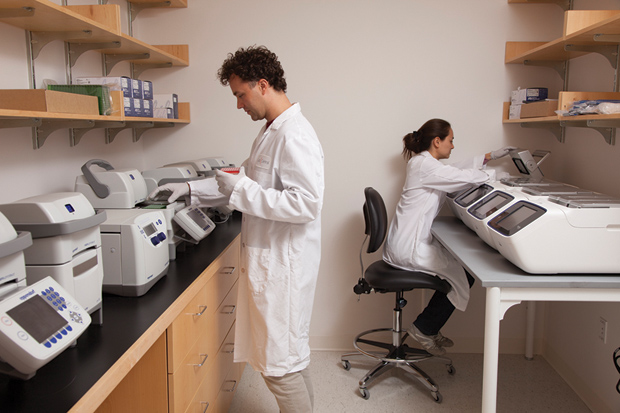
Johnson & Johnson was also a founding sponsor of Boston-area LabCentral, a similarly modeled incubator that developed when Peter Parker, a former chemist, venture capitalist, and serial entrepreneur, found that it wasn’t easy to start his company, Cequent Pharmaceuticals, even with funding. “With money in hand it still took us seven months to run our first experiment. I told my partner, there’s got to be another way,” says Parker.
Parker, Johannes Fruehauf, and Tim Rowe won a US$5 million capital grant from the Massachusetts Life Sciences Center to build out a nonprofit incubator lab space. LabCentral opened in November 2013 and has 29 biotech companies in residence. Screening begins with a short form followed by a committee interview for companies that fit the mission statement of the incubator and have less than US$7.5 million in capital. If accepted, companies pay a set amount for access to maintained lab spaces, conference rooms, event space, kitchens, and talks and programs specific for start-ups (Figures 4–6).
“Most incubators have some sort of hook or require you to give a percentage of the company. We don’t ask for anything, so we get the best companies,” says Parker, adding that most companies LabCentral accepts are already well financed (with around US$3–4 million) and have raised about US$20 million by the time they graduate. “By the time they leave, they’re really ready to be a biotech company in the real world.”
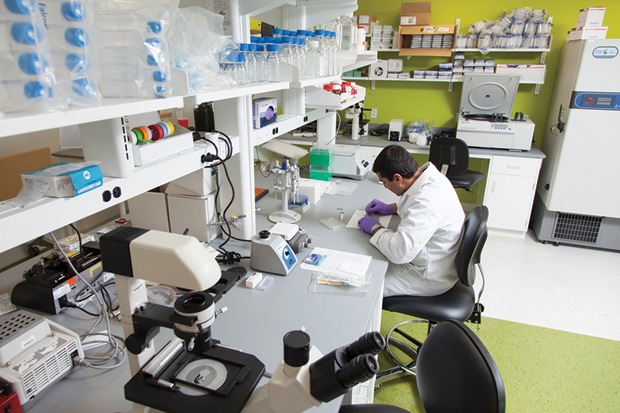
So, why do well financed start-ups need to go through an incubator at all? Parker says the coworking effect of having a lot of new companies in a space together can help foster success and lead to new collaborations.
“Businesses grow faster and better because their ideas are tested more in talking with us and their peers,” says Parker. This mindset is reflected in the program’s preference to refer to itself as a “launch pad” rather than evoke the connotation of a hospital incubator, which supports frail organisms. Says Parker, “We’re part of a new breed of shared lab space.”
The sense of community and support from the incubator space can be vital, agrees Matthew Owens of Harlem Biospace, which opened in 2013 with support from the New York City Economic Development Corporation. “We have a range of experience levels, and those taking on ventures for the first time can share approaches to common challenges,” says Owens.
His incubated companies—currently 18—also aren’t required to agree to investment or equity options as a condition, and they hail from private endeavors and surrounding research institutes such as Columbia University, New York University, The Rockefeller University, and more. In addition to renting space, Harlem Biospace also organizes talks open to the community for those interested in starting or joining a new company. “We’ve had several companies formed or intended to be formed from people meeting in these settings,” says Owens, adding that those events function as low-friction places to find partners and interns.
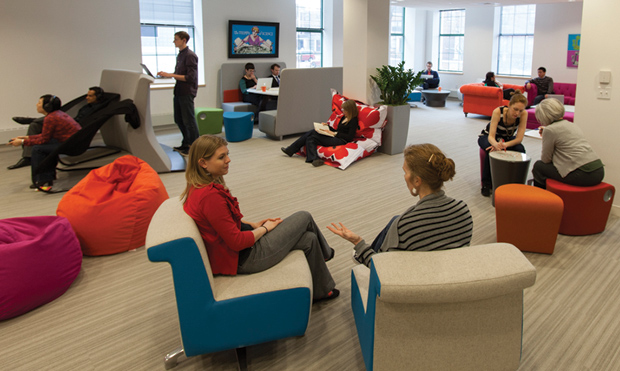
The Growing Pains of Hatching Biotechs
Despite success stories, do incubators really help start-ups become independent, stand-alone businesses in the long run? The NBIA claims so. In 2010, it reported that, after five years, a small business that went through an incubator program had a survival rate of 87%, compared to the 44% survival rate of companies without incubators. Most companies—84%—stayed in the location of their incubator.
Alejandro Amezcua of the Whitman School of Management at Syracuse University, however, says this is not the case. He published work in 2013 comparing each of 18,000 incubated companies across all industries to three comparable nonincubator companies apiece (36,000 nonincubator companies), controlling for factors such as industry, capital, size, date, and characteristics of the founding members, and found that incubation was not an indication of success. He adds that the NBIA sampled a smaller, self-selected group in its study, which might account for the discrepancy in findings.
“Companies that go through incubators do grow faster than others, but they also tend to die off sooner,” Amezcua says.
One reason for the earlier die-off of incubated companies, he speculates, might be that incubators aren’t skilled at choosing clients who are going to succeed. In a closer look, he also found that the companies that tended to do better in an incubator are ones that have some nominal experience as stand-alone businesses before incubating.
“Clearly there’s a demand and need for these types of facilities,” says Amezcua, adding that more incubators are popping up. “The question is, are these investments, especially the 85% or so that are nonprofit or publicly funded, worth it to taxpayers?”
Despite the lack of proof of the usefulness of incubators, a number of other countries are also supporting them. Israel, Singapore, France, China, and Brazil all have a growing biotech incubator population, says Amezcua. These countries are ahead of or pacing the United States, with a large difference being that the United States doesn’t have a centralized federal policy on incubation.
While start-ups in the life sciences and biotechnology may be riskier to incubate than other companies, Amezcua acknowledges that, if done well, the payoff could also be much greater— both in terms of financial success but also in having an impact on health and well-being. And as incubators and other assistive programs for biomedical and biotech start-ups continue to pop up, perhaps the right conditions of collaborative lab space, mentorship, and other support will lead to the next breakthrough in health and medicine.



